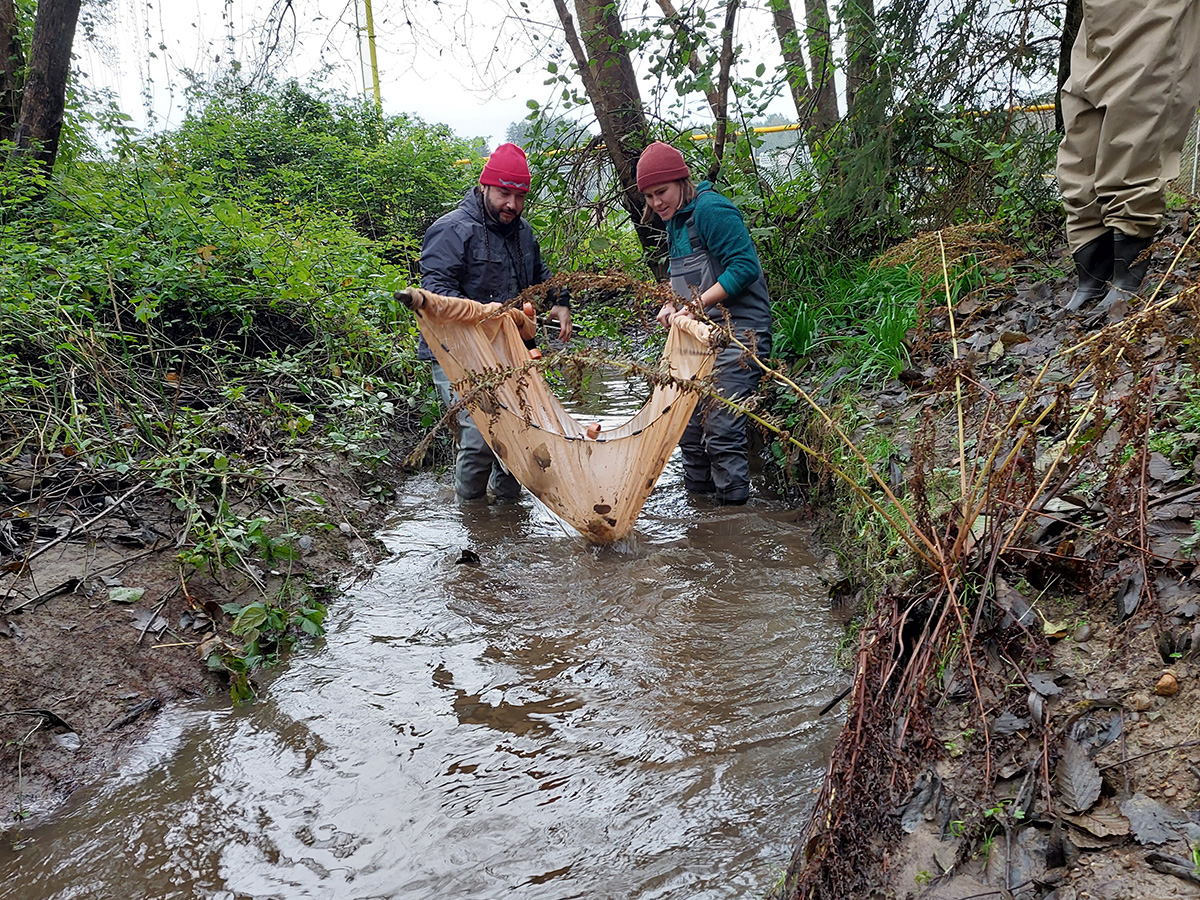Climate change research grants support tribal peoples in resource management

In 2022–23, the State of California provided $100 million to the University of California to fund research grants that support climate change resilience in communities across the state. Three of the research projects funded by the California Climate Action Seed Grant are establishing collaborations between academic institutions and tribal nations to support climate change resilience through tribal resource management. The projects include studying the ecology and cultural values of pinyon pine forests in the Eastern Sierra, monitoring fisheries on the North Coast, and studying the changing landscapes of California’s Indian Community Lands.
Ensure tribal fishing
California Indians have historically fed their families with seafood from the Pacific, but their traditional ecological knowledge and the voices of California tribal governments are largely ignored by fisheries science. On California’s North Coast, for example, many local fish populations, such as smelt, surf bass, giant kelp, sea stars, and razor clams, are culturally important and essential to tribal livelihoods, but receive little attention from science or conservation agencies.
A $1.1 million Climate Action Seed Grant is now being awarded to help fill these knowledge gaps. The grant will establish the Northern California Tribal Marine Fisheries Collaborative, connecting researchers from Cal Poly Humboldt, state and federal agencies, and several North Coast tribal nations, including the Tolowa Dee-ni’ Nation, the Wiyot Tribe, the Blue Lake Rancheria, the Cher-Ae Heights Indian Community of the Trinidad Rancheria, and the Resighini Rancheria. An additional $20,000 grant from the Community Engaged S/Hero Supplement will strengthen project efforts to collaborate with tribal communities.
“Indigenous peoples have inhabited the California coast since time immemorial,” says Rosa Laucci, marine biologist and manager of the Tolowa Dee-ni’ Nation’s Division of Marine Resources. The Tolowa Dee-ni’ Nation is a federally recognized Native American tribe located along the Pacific Ocean in northern California and southern Oregon. “All of our monitoring activities are based on our harvest claim – a set of laws that govern our marine resources based on cultural practices, traditional knowledge, reciprocity and restorative justice.”
Agencies involved in the collaboration include California Sea Grant (a group of California universities and federal and state agencies that work on coastal science issues), the California Department of Fish and Wildlife, and the National Oceanic and Atmospheric Administration’s Southwest Fisheries Science Center. These organizations will provide tribes with training and resources to fill knowledge gaps about important food and cultural species. In return, the data tribes receive will help ensure these fisheries are managed sustainably in the face of climate change.
“The most important part of this project is to help our tribal partners develop professionally and improve their skills in monitoring their species,” says Jose Marin Jarrin, assistant professor in the Department of Fisheries Biology at Cal Poly Humboldt.
The majority of the grant funds are used to hire staff to monitor and manage the fishery; much of the remaining funds are used for training, equipment, and travel to study sites, conferences, and knowledge-sharing events. Tribes have full sovereignty over the information they make publicly available.
Fundamental questions about some of these important and traditionally significant fisheries remain unresolved, such as how long the species live, what habitat they live in, and when and where they reproduce. Such information is important to understanding how to harvest species sustainably. Monitoring programs and research collaborations will examine these fundamental questions, as well as how sea level rise affects traditional fishing areas.
The Tolowa Dee-ni’ Nation already conducts a variety of marine biomonitoring efforts, including surveys of sea urchins and sea stars to understand the health of the intertidal zone, monitoring kelp abundance and marine biotoxins to sustain subsistence, and collecting environmental DNA samples to monitor surf salmon abundance in ancestral waters. The Northern California Tribal Marine Fisheries Collaborative will support new equipment and knowledge sharing.
“These monitoring projects are important to the livelihoods and well-being of the Tolowa people today, tomorrow and for future generations,” says Laucci. “What happens to the land happens to the people.”
Conservation of the pinyon pine forest
In the sage-scented high desert on the eastern side of California’s Sierra Nevada, the calls of pinyon jays echo down slopes covered with mighty pinyon pines. These pinyon-juniper forests cover nearly 1.6 million acres across California and produce edible pine nuts. Although adapted to dry conditions, pinyon pine forests are at risk from recent wildfires and drought caused by climate change.
“There have been several recent wildfires that have caused a major loss of these pinyon-juniper forests,” says Miranda Redmond, assistant professor of forest science and climate change at UC Berkeley. “That means a major loss of wildlife habitat, carbon stores and pine nuts.”
Pinyon pines are culturally important to Indigenous peoples throughout the Eastern Sierra Nevada. A collaboration between participating tribal nations—including the Bishop Paiute Tribe, Big Pine Paiute Tribe, Washoe Tribe of Nevada and California, and the Bridgeport Indian Colony—and community organizations and researchers from UC Berkeley and Stanford University received a $2 million Climate Action Seed Grant to improve the resilience of California’s pinyon-juniper forests while expanding Indigenous forest management in the Eastern Sierra Nevada. The project will collect field data to help tribal and state land managers understand the ecology of pinyon-juniper forests, build models of how these ecosystems might respond to climate change, and predict pine nut production in the future.
“The pinyon pine is a cultural keystone species and provides important ecosystem services to people across California,” says Paul Burow, a postdoctoral fellow at Stanford University and research partner on the project. “Land managers and policymakers can encourage community-led efforts to support resilient forest landscapes today and for future generations.”
Tribal partners will also engage their communities to reconnect with these forests. Efforts will include encouraging elders to pass on their knowledge to younger generations. Through household surveys developed in collaboration with tribal partners and community organizations, this project will characterize how Eastern Sierra residents use and value forest landscapes. The cultural values and traditional ecological knowledge collected will then inform management plans. A $20,000 Community Engaged S/Hero Supplement grant will help project partners apply best practices for working with tribal community members.
Tribal nations have led the project’s scientific questions and community surveys. This helps ensure that the results support tribal management of these ecosystems. The project builds on the work of partners such as the Bishop Paiute Tribe to identify pinyon-juniper populations to protect and conserve in traditional gathering areas outside reservation boundaries. Data from this community-based monitoring program will contribute to forest management decisions, such as identifying areas of declining health through community surveys.


